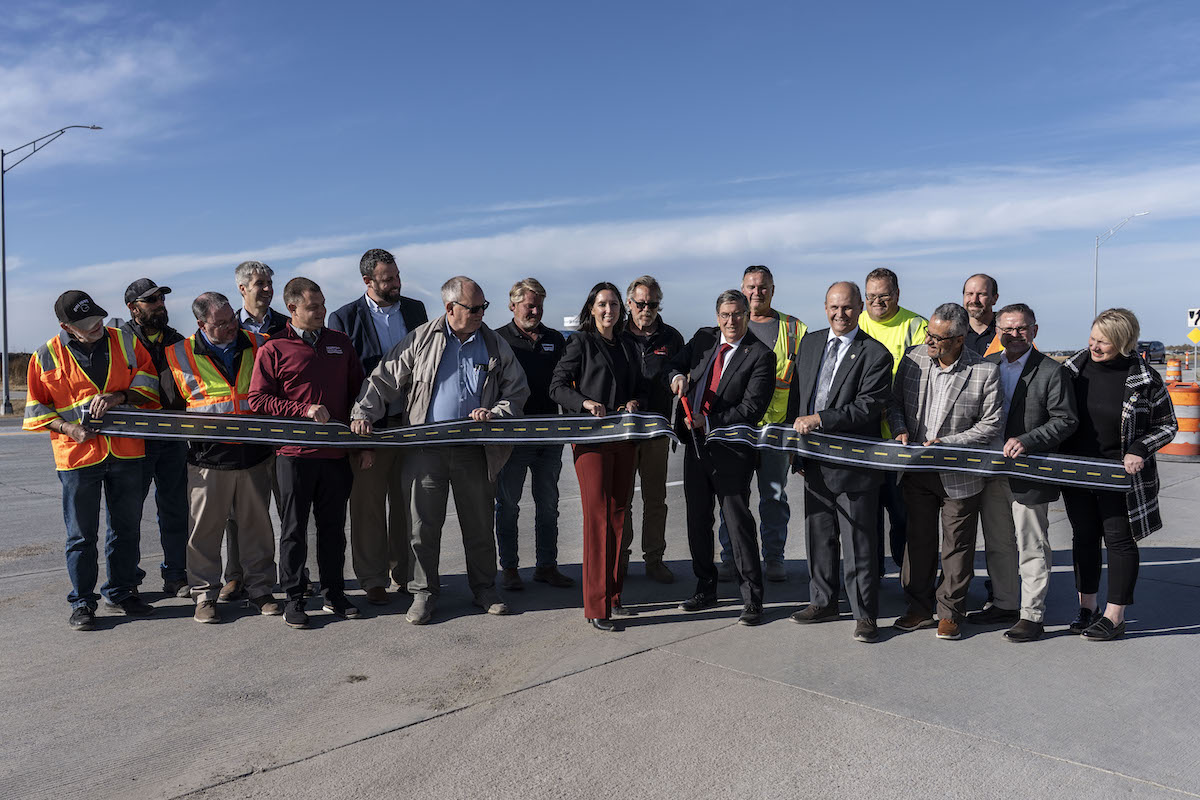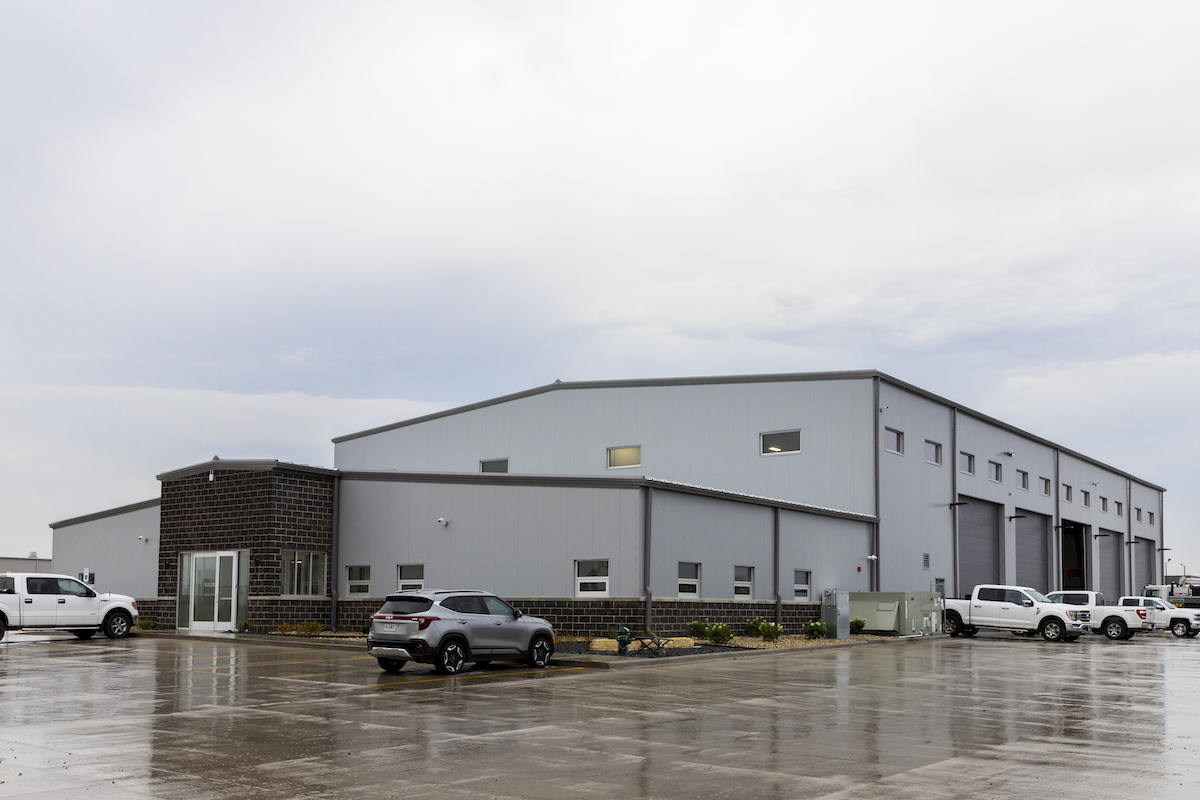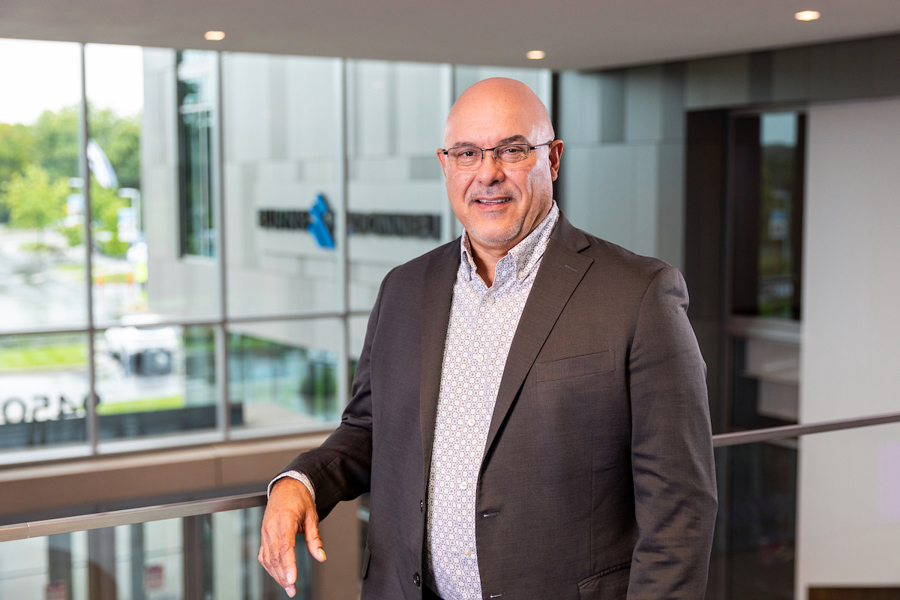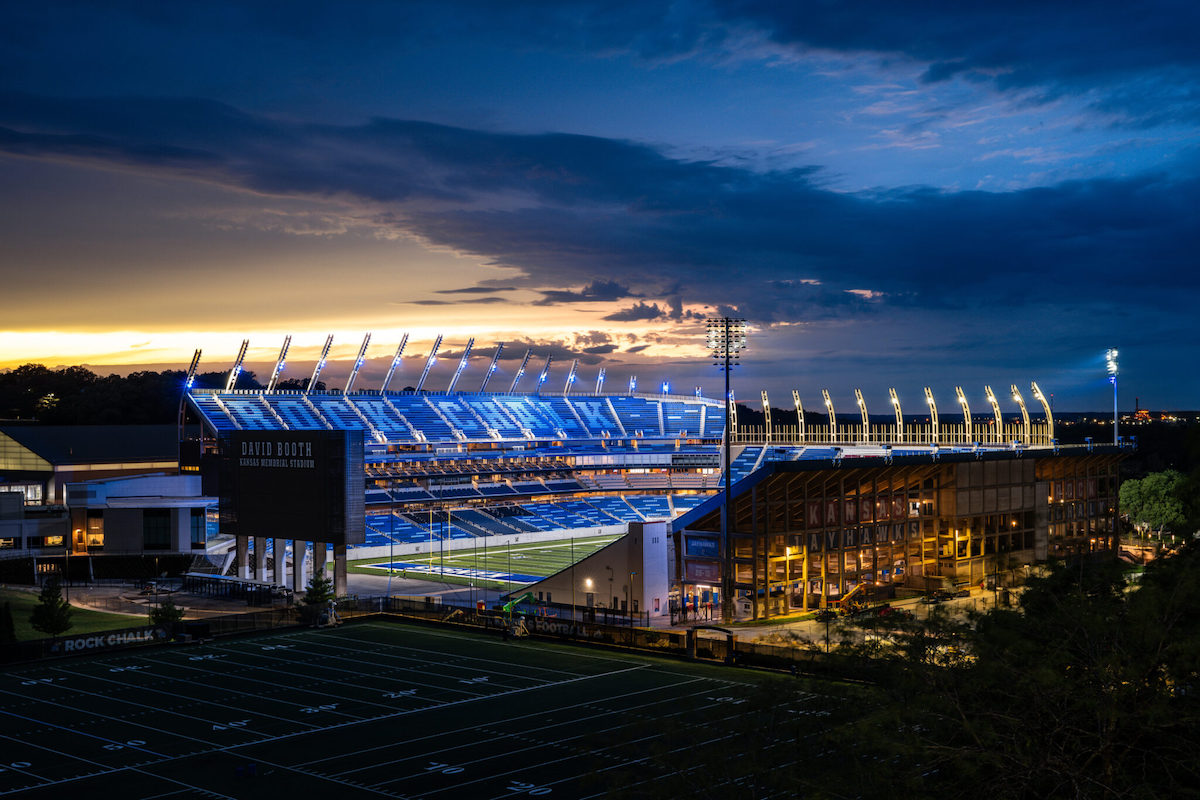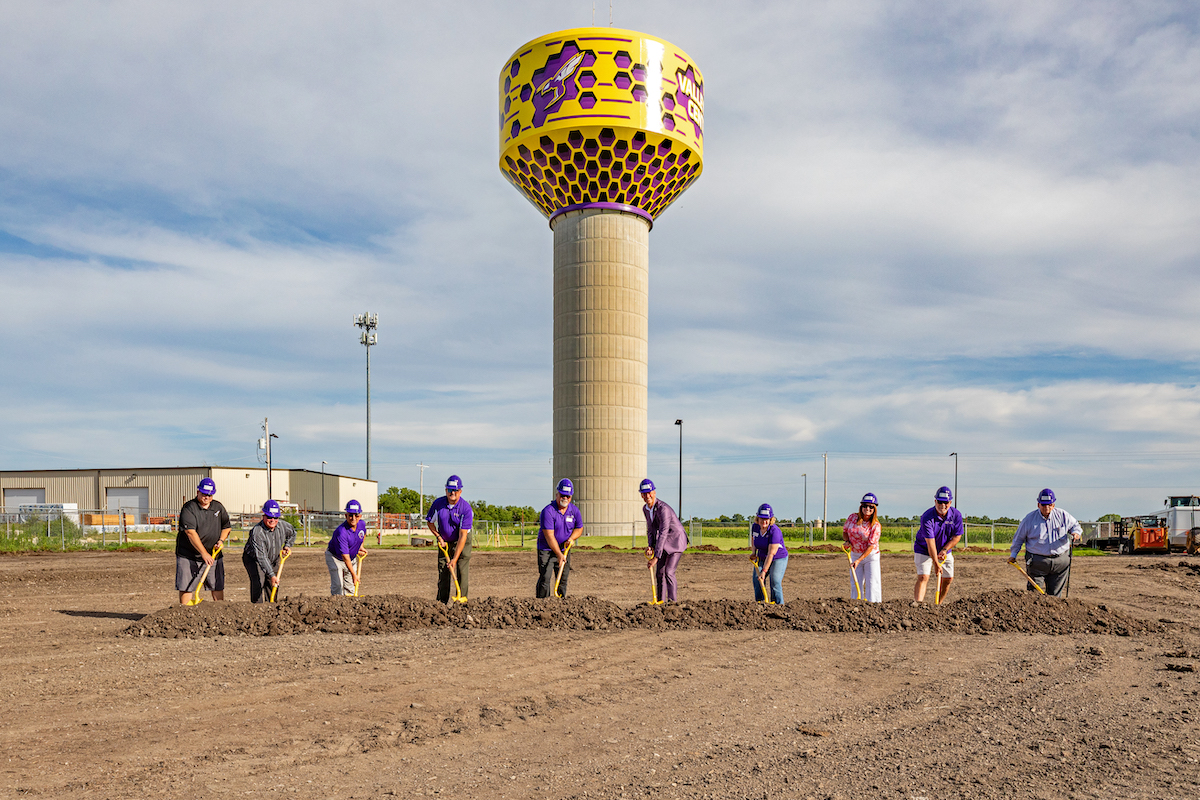Where did you grow up and what sparked your interest in design?
I'm from Indianapolis. I went to Park Tudor for high school and went to Howard University after high school. And that was quite purposeful. Park Tudor did a wonderful job at helping me understand how to work and live in the majority white country. Howard helped me understand how to be a person of color in the majority white country.
Howard is an HBCU (historically black college or university), right?
Yes, in Washington, D.C.

| Your local Iowa Mold Tooling Co Inc dealer |
|---|
| Star Equipment LTD |
You don't think about learning in the majority until you experience it. Growing up – I'm 54, so I'm not that old – there were occasions where people even at Park Tudor wondered if I was there on scholarship or questioned if my parents could afford to pay the tuition. And it's like, 'My parents paid tuition just like your parents.' Honestly, the very first words I heard on my first day at Park Tudor, when my dad dropped me off, were 'Hey, you n*****.' First time anybody ever called me that. I was in seventh grade. That interaction set the tone for years.
Going to Howard, that was an element that I didn't have to worry about. There were other benefits as well, most of my professors were of color, which I had never experienced to that extent. They were Hispanic. They were Black. They were from the U.S. They were from the Caribbean. They were from Africa. Male and female. It was a very different dynamic.
As an African American architect who has achieved so much in the design industry in Indiana – one which is led mostly by white men – how do you perceive your journey and the opportunities that have been available to you in comparison to your non-minority peers?
Vop Osili and I were business partners at A2S04. People liked us, and I used to joke that we both were articulate and ‘relatively intelligent’. We both were blessed with an amazing pedigree of parents. Both of us were well connected. And so, as a firm, we were fortunate that we never really wanted for great work.
Having said all that, there were times I felt as if we were not considered equal to our peers. I can give you a specific project example. We were talking about fee, and first the client wanted to argue about fee and I said 'No. This is our fee. It's reasonable. It's fair.' And they would agree to that. Then, once we agreed to fee, the intent was to change our scope and reduce our fee and our scope.
What advice would you offer to minority architects seeking to gain exposure and valuable experience in the industry?
The number of persons of color in the design profession, particularly architecture, is low. I am past president of the National Organization of Minority Architects (NOMA). And because of that disparity, I started a foundation at NOMA to help fund what we call Project Pipeline. Project Pipeline, for lack of a better description, is a national architectural camp for mostly inner-city schools, primarily for students of color from sixth to eighth grade. Over the past 10 years, the foundation has received over $800,000 to help put on the program in about 35 cities across the country.
A lot of times, you go to schools and most people don't know what an architect is. People of color oftentimes won't know what an architect is. If you don't know an architect, you don't even know that's something you might be interested in. That's the purpose of the Project Pipeline. To some degree, exposure is solely why I applied for my fellowship. It was simply to provide evidence that people of color are competent and capable.
What do you think about some of the ongoing efforts being made by local firms to increase representation for people of color?
I think more and more firms are looking to do that. I wonder, for what purpose? Is it genuine or are they trying to check a box? I’m also curious how the recently Supreme Court decision on affirmative action will impact this as well.
One of the issues that I have with DEI when you really look at it, is most of the people who seem to be talking about DEI are white women. It's hard for me because while we speak of women as well, we're primarily talking about why people of color aren't being represented. We’re seeing a wave of people talking about the lack of representation of people of color, but those people talking about that lack of representation are not the same people within the majority group that's not representative.
And in the design profession, it goes further. We have a lot of people talking about DEI and social equity, and they start talking about projects within underserved and black and brown communities. They talk about what they did in those communities with black and brown folks who are underserved. But they don't even bring the people within those communities whom they supposedly served back into the discussions where they're talking about what they supposedly did and how they worked with them.
I'm not going to question whether they're sincere or not. But my disappointment then comes if they're working in these communities, why aren't they bringing individuals from these communities with whom they teamed into these same discussions so those individuals gain some exposure and experience? If you're truly talking about diversity, equity, inclusion, and justice, isn't that really it? Instead of just saying what you did, you're actually reaching out and incorporating people you helped or bringing in diverse firms to make sure they're engaging in discussions and learning from their exposure.
What role can an experienced architect play in the mentorship of a young professional, particularly when it comes to gaining exposure for minority talent?
I think the biggest thing is finding people in your firm who are supportive of you. I would always tell women if they were married or if they wanted kids, 'I can help you be a great architect, but I can't help you be a great mother.' I would ask them, 'Do you know women in the architecture profession with whom you can have that discussion? Because I can't have that with you. It's different for me than it is for a mother.’ And if they didn't, I'd make those connections and I'd say, 'When you find someone you're comfortable with, let me know. If not, I'll keep making connections, because you need this.'
What is your perception of the current system in place for acknowledging and fostering design talent within the industry?
We have architectural awards where we talk about what we think are the most important and beautiful buildings, and I've won those myself. But, to some degree, I think those are somewhat amusing and silly. As a profession in general, our metric for success and quality design can be very skewed and different because that's kind of how we're trained.
Pretty much all of our training in any school in the U.S., even at HBCUs, is primarily Euro-Centrically focused. Consider that the majority of our architectural history has to do with Europe and the early Americas and consider how much time you spent on African history, or Asian history, or Indian history. The majority of our architectural education is based upon Euro-Centric models. And then consider that most of the buildings and spaces being studied were built and led by white males. Simply based upon the way our architectural training is set up and the basis for that training being largely European, it’s pretty hard to disagree with the statement that architecture in the U.S. is primarily European male focused.
Do you think the Project Pipeline program could combat that Eurocentric model of teaching by introducing different architectural styles?
Yes, and honestly, I think we're so far evolved now that stylistically so much stuff is meshed and melded. We’re just playing on older things.
There's a gentleman named Mike Ford who for years has pushed this concept of hip-hop architecture. He started the concept of hip-hop architecture and began doing presentations probably 15 years ago. He goes around speaking on it and Herman Miller / Knoll partnered with him on a design. He has used that as a tremendous platform to do other things and engage with individuals who may not have been as aware of architecture.
That was just his approach. We had a NOMA national conference in Indianapolis in 2012 where we partnered with the Children’s Museum. There were about 60 or 70 students from a local middle school along with 12 or 15 local professionals of color. We pulled together local design professionals and participants from the conference. Most of these students didn't know about architecture. We had engineers there, we had landscape architects there, and these students got to see people who looked like them talking about things they knew.
Which lessons do you consider to be the most valuable or important in your professional life or in life overall?
Don't take yourself too seriously. That's a big one. And then I like to say even when it's about you, it's not about you.
What I mean by the latter one is, if you're working on a project, or you're working in life, and you make a mistake, then you made a mistake. It was your mistake, so it's about you. But it's really not about you, because it doesn't necessarily matter that you made a mistake. What matters is that you respond to your mistake and you find a way to fix it. Or if you can't find a way to fix it, you talk to somebody else and you find a response. You try to correct it and do better. That's why I say even when it's about you, it's not about you.
A positive example – and I use this with all my projects – is when we start a project, and it's a great project, you get all the glory. My job is to make your jobs easier. That also means if there's an issue, I take the fall. That doesn't mean I won't get on you when we get back to the office. But in terms of the client, it's my responsibility, and I take fall.
So again, on both sides, even when it's about you, it's not about you. That’s critical. Oftentimes, people get caught in that spiral of, ‘I have to do this,’ or ‘I have to do that,’ or, ‘This is my responsibility,’ or, ‘I'm not being treated fairly’. We spend so much time on ‘me, me, me, me, me’. But then you step back and it's like, you know what, if that is true, how are you going to change it? Or if you feel you can't change it, you can still change the circumstances around you. You can change how you react to it. You can change with whom the people you react.
What does it mean to you to be acknowledged as a member of the AIA College of Fellows, and what do you derive from this recognition?
I got into architecture because of the amazing ability that we as architects have to impact people in their lives. As architects, we affect where you live, how you live, potentially how long you can live. We’re in where you learn, potentially where you worship, where you play, where you live. We as architects and designers are engaged in so many of the environments that people live in. The opportunity for us to impact people's lives is really tremendous.
So many people congratulated me when I was named to the AIA College of Fellows. I kept saying thank you, but I didn’t want to let all the back effort slide that it takes to do this. I made a post on Facebook to emphasize that there was a whole village of people behind making this whole thing possible. I had reference writers, photographers, exhibit writers, etc., and all these folks helped. I ended my post by saying, ‘Thank you, because we did it.’ I'm fortunate. I'm comfortable in my skin. I'm happy and I'm having fun. A lot of people can't say that.
Editor’s Note: This interview has been edited for length and clarity.






















